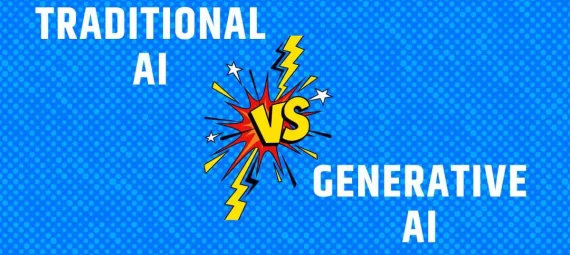Understanding Traditional Machine Learning
Traditional Machine Learning relies on structured data and predefined algorithms to make predictions or decisions. It’s a data-driven approach that excels in scenarios where patterns are well-defined and there is a clear distinction between input features and output labels.
When to Apply Traditional ML:
- Structured Data:
- Traditional ML is highly effective when dealing with structured data, such as databases, tables, and spreadsheets.
- Clear Input-Output Mapping:
- When the relationship between input features and output labels is well-defined and can be explicitly stated, traditional ML algorithms shine.
- Classification and Regression Tasks:
- Tasks like image classification, sentiment analysis, and predicting numerical values benefit from the clear-cut nature of traditional ML algorithms.
- Well-understood Domains:
- In domains where the underlying principles are well-understood and can be translated into features, traditional ML models provide interpretable results.
Exploring Generative Artificial Intelligence
Generative AI, on the other hand, involves training models to generate new, often highly realistic, data instances. This approach is particularly powerful in scenarios where creativity and the ability to generate novel content are essential.
When to Apply Generative AI:
- Creative Content Generation:
- Generative AI excels in tasks that involve generating creative content, such as image synthesis, text generation, and music composition.
- Unstructured Data:
- When dealing with unstructured data, like images, audio, or text, where patterns are not easily discernible by traditional algorithms, generative models can learn complex representations.
- Imitation and Creativity:
- If your goal is to mimic a particular style, create variations, or explore new possibilities, generative AI models provide the flexibility needed for creative endeavors.
- Anomaly Detection and Novelty:
- Generative models can be applied in anomaly detection by learning the normal patterns and identifying instances that deviate from the learned norms.
Table-wise Comparison:
| Criteria |
Traditional ML |
Generative AI |
| Data Type |
Structured data |
Unstructured data |
| Use Cases |
Classification, Regression |
Creative content generation |
| Training Data |
Labeled datasets |
Unlabeled datasets |
| Interpretability |
Generally interpretable |
Often less interpretable |
| Domain Knowledge |
Requires domain expertise |
Can discover patterns on its own |
| Complexity of Output |
Predictive |
Generative |
| Resource Intensity |
Often less computationally intensive |
Can be computationally demanding |
Conclusion:
In summary, choosing between Traditional Machine Learning and Generative AI depends on the nature of your data and the goals of your project. Traditional ML is powerful for structured, well-defined tasks, while Generative AI shines in creative, unstructured domains. By understanding the strengths and weaknesses of each approach, you can make informed decisions to drive successful AI implementations in your projects.



